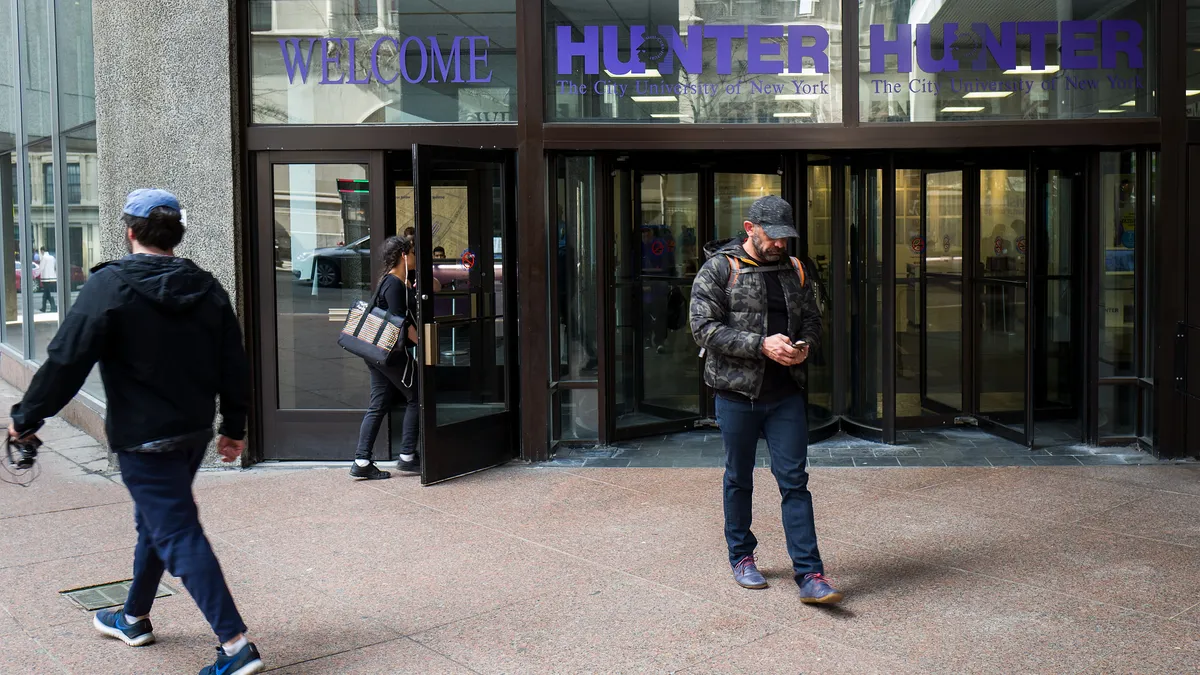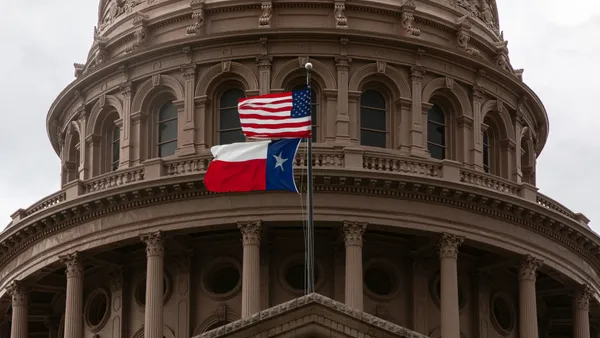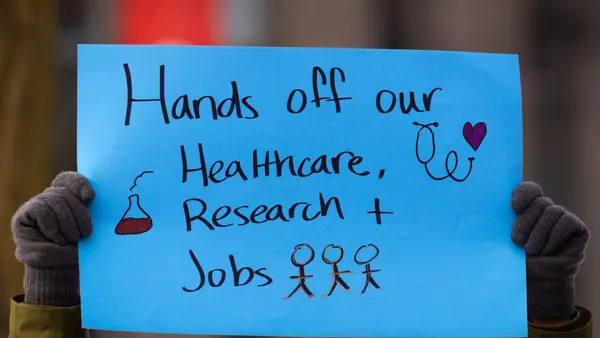Dive Brief:
- Red tape and fine print are significantly limiting the number of students who receive New York’s Excelsior Scholarship, a free college program that covers two- and four-year institutions, a report from the Urban Institute found.
- Researchers focused on the City University of New York system, finding that only 5% of first-time first-year students received the award in fall 2018. Among that cohort, 68% of dollars went to students with family incomes at or above $70,000, and only half of recipients renewed the scholarship for a second year.
- The Excelsior Scholarship has relatively stringent eligibility criteria, including a post-graduation residency requirement, that policymakers might seek to avoid if they are looking to serve the most students possible, researchers concluded.
Dive Insight:
One of the first free college programs of its kind, the Excelsior Scholarship was designed as a middle-income award. It covers the last dollar of need, meaning it kicks in when other aid is used up.
Given that structure, the scholarship is unlikely to go to the poorest students, who often have their tuition covered by Pell Grants and other awards. But researchers found that uptake was low even among the students who did qualify. Only 25% of eligible students received the award. Eligible Black and Hispanic students were about 10 percentage points less likely than White and Asian students to receive the scholarship.
"If the scholarship wants to have a more enhanced impact on low-income students, removing some of that red tape would be helpful," said Daniel Sparks, a doctoral student at Teachers College at Columbia University and coauthor of the report.
States typically include stringent eligibility requirements for scholarships as a fiscal responsibility measure. But New York goes further than most. Students must complete 15 credits per semester, excluding remedial courses, with no breaks in enrollment except for limited circumstances.
Excelsior has become the leading example of a post-graduation residency restriction in a free college program because it requires students to live and work exclusively in New York for as many years as they receive the award. If any obligations are unmet, the grant converts to a no-interest loan that must be repaid to the state.
"Obviously the intention of those (residency requirements) is to keep students in local labor markets and prove to the taxpayer that putting this money towards scholarships is going to be in the state’s best interest," Sparks said.
But some students may be deterred from applying even if they have no intention of working outside the state post-graduation.
"It’s hard to know where you're going to be and what you're going to want to do upon graduating from college," Sparks said.
The scholarship also comes with paperwork. Students who seek to receive Excelsior must fill out three aid applications, including the Free Application for Federal Student Aid and a state grant-specific form.
To poorer students, who are unlikely to receive as much money from the scholarship as their middle-income peers, the additional work may not seem worth it. Roughly a quarter of eligible students who received no award only needed to cover $500 in tuition, after factoring in other aid.
Others who were eligible but didn't receive awards would have been due larger amounts, though — 28% stood to gain more than $2,500.
Though 31% of eligible students at CUNY's four-year colleges received the scholarship, only 8% of those students at the system's community colleges did.
The report did not examine scholarship recipients outside of CUNY, meaning those in the State University of New York system. It also used data from early on in scholarship implementation, from fall 2018 to fall 2019, the second year of the program.
"It certainly could be that incidence is higher among students attending SUNY schools and students attending schools with more middle-income students," Sparks said.
Sparks hopes the report opens up a conversation about improving state scholarships. Now that federal action on free college appears unlikely, more states have moved to create their own programs, with some like New Mexico covering tuition at even four-year institutions. If policymakers want to see high uptake, they might limit student requirements, according to Sparks.
The New York Higher Education Services Corporation, which administers the Excelsior Scholarship, and the state's governor's office, which championed its creation in 2017 under Andrew Cuomo's administration, did not respond to requests for comment.














